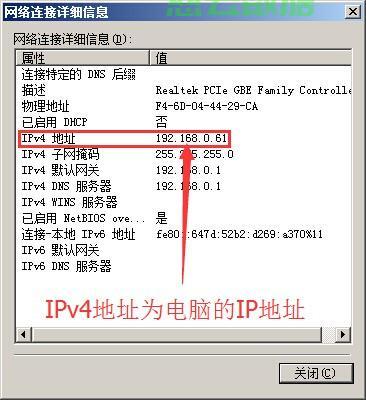上一篇
html声明字体
- 行业动态
- 2025-05-05
- 3297
在HTML中,通过CSS的
font-family属性声明字体,如 body {font-family: 宋体, sans-serif;},避免使用已废弃的“标签
HTML声明字体的基础方法
在HTML中声明字体主要通过CSS实现,以下是几种常见方式:
直接在HTML标签中使用<font>(不推荐)
<!DOCTYPE html> <html> <body> <font face="Arial" size="4">这是旧版HTML字体声明</font> </body> </html>
说明:<font>标签已被HTML5废弃,建议使用CSS替代。
通过内联CSS样式声明字体
<!DOCTYPE html> <html> <body> <span style="font-family: 'Microsoft YaHei'; font-size: 16px;">内联样式字体</span> </body> </html>
特点:
- 直接作用于单个元素
- 优先级高于外部/内部样式表
- 可读性差,维护困难
在<head>中使用内部样式表
<!DOCTYPE html>
<html>
<head>
<style>
body {
font-family: 'Arial', sans-serif; / 首选字体+备选方案 /
font-size: 14px;
line-height: 1.6;
}{
font-family: 'Georgia', serif;
font-weight: bold;
}
</style>
</head>
<body>
<h1 class="title">内部样式表示例</h1>
<p>段落文字使用Arial字体</p>
</body>
</html>优势:

- 集中管理样式
- 支持媒体查询(响应式设计)
- 可复用样式类
链接外部CSS文件(推荐)
<!DOCTYPE html> <html> <head> <link rel="stylesheet" href="styles.css"> </head> <body> <p class="content">外部样式表声明的字体</p> </body> </html>
外部CSS文件示例(styles.css):
.content {
font-family: 'Helvetica Neue', Arial, sans-serif;
font-size: 18px;
color: #333;
}优点:
- 彻底分离内容与样式
- 多页面复用
- 便于团队协作开发
Web字体引入方法
使用@font-face加载自定义字体
<!DOCTYPE html>
<html>
<head>
<style>
@font-face {
font-family: 'MyCustomFont'; / 自定义字体名称 /
src: url('fonts/myfont.woff2') format('woff2'),
url('fonts/myfont.woff') format('woff');
font-weight: normal;
font-style: normal;
}
body {
font-family: 'MyCustomFont', sans-serif;
}
</style>
</head>
<body>
<p>自定义Web字体示例</p>
</body>
</html>关键参数:
src: 字体文件路径(需多种格式兼容浏览器)font-weight/font-style: 定义字体变体- 备选方案:始终添加通用字体族(如sans-serif)防止加载失败
引入Google Fonts(快速方案)
<!DOCTYPE html>
<html>
<head>
<link href="https://fonts.googleapis.com/css2?family=Roboto:wght@400;700&display=swap" rel="stylesheet">
<style>
body {
font-family: 'Roboto', sans-serif;
}
</style>
</head>
<body>
<h1>Google Fonts示例</h1>
</body>
</html>说明:
- 通过
<link>标签引入Google Fonts CSS文件 wght参数控制字重(400=正常,700=加粗)display=swap优化字体加载体验
字体声明核心属性对照表
| 属性 | 说明 | 取值示例 |
|---|---|---|
font-family | 指定字体族 | “Arial”, sans-serif |
font-size | 字体大小 | 16px/1.2em/larger |
font-weight | 字体粗细 | normal/bold/400/700 |
font-style | 字体样式 | normal/italic/oblique |
line-height | 行高 | 5/200%/1.6em |
font-variant | 小型大写字母等特殊变体 | normal/small-caps |
注意事项与最佳实践
优先使用系统安全字体:
- 中文:微软雅黑(
Microsoft YaHei)、宋体(SimSun) - 英文:Arial/Helvetica(无衬线)、Times New Roman(衬线)
- 日韩字体:Noto Sans CJK系列
- 中文:微软雅黑(
字体加载性能优化:
- 使用
woff2格式(体积最小) - 通过
font-display: swap防止FOIT(Flash of Invisible Text) - 限制Web字体数量(每个页面不超过3种)
- 使用
跨平台兼容性:
- 提供至少2种备选字体族
- 使用通用字体族(sans-serif/serif/monospace)作为最终备选
- 测试不同浏览器渲染效果(尤其中文字体)
相关问题与解答
Q1:为什么避免使用<font>标签而改用CSS?
A:<font>标签属于HTML4遗留特性,HTML5已明确废弃,CSS的优势包括:与表现,提升代码可维护性
- 支持复杂样式组合(如
font-family: 'A' || 'B' || 'C') - 可利用继承机制减少重复声明
- 兼容现代浏览器特性(如@font-face)
Q2:如何优化Web字体加载速度?
A:可通过以下方式优化:
- 子集化字体文件:仅包含页面实际使用的字符(如中文网站可移除拉丁字符)
- 压缩字体格式:优先使用
.woff2格式(比.ttf缩小50%-70%) - 预加载关键字体:
<link rel="preload" href="fonts/main.woff2" as="font" type="font/woff2" crossorigin>
- 设置
font-display属性:@font-face { font-display: swap; / 立即渲染文本,后续替换为Web字体 / }













